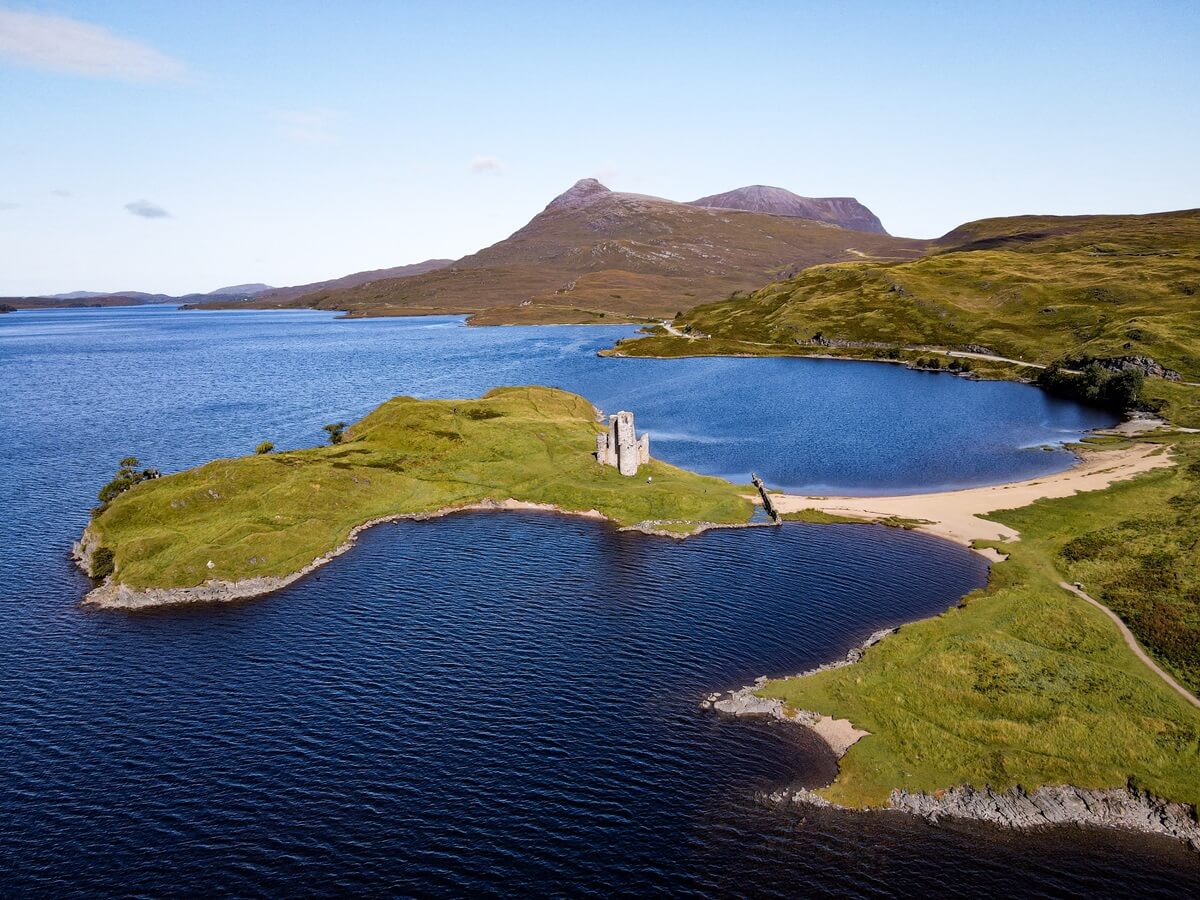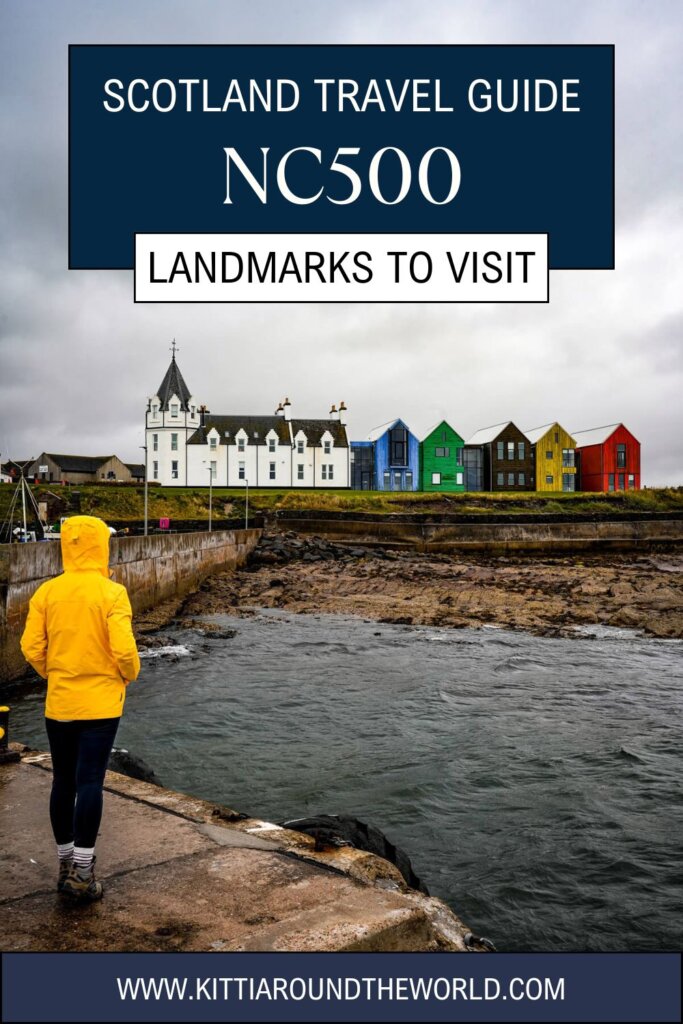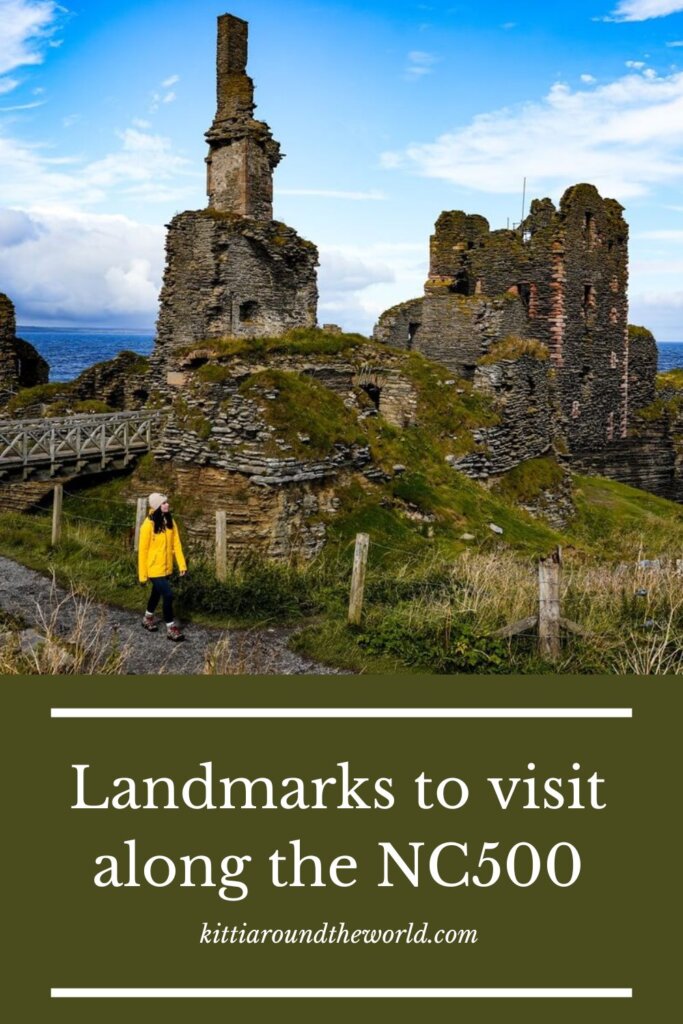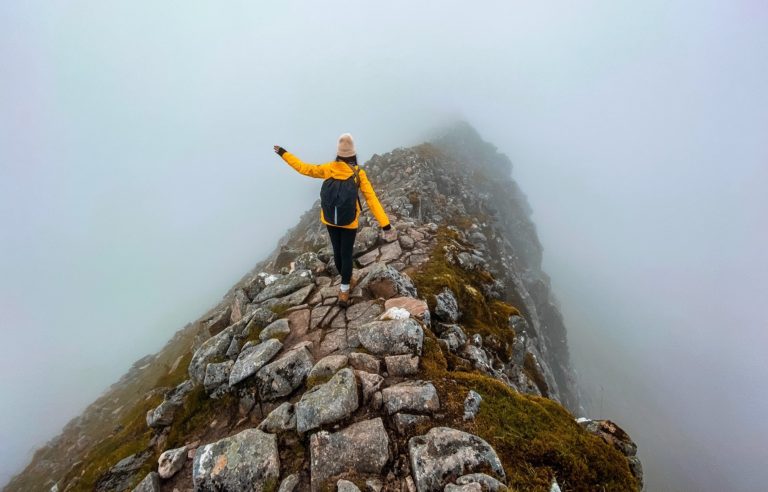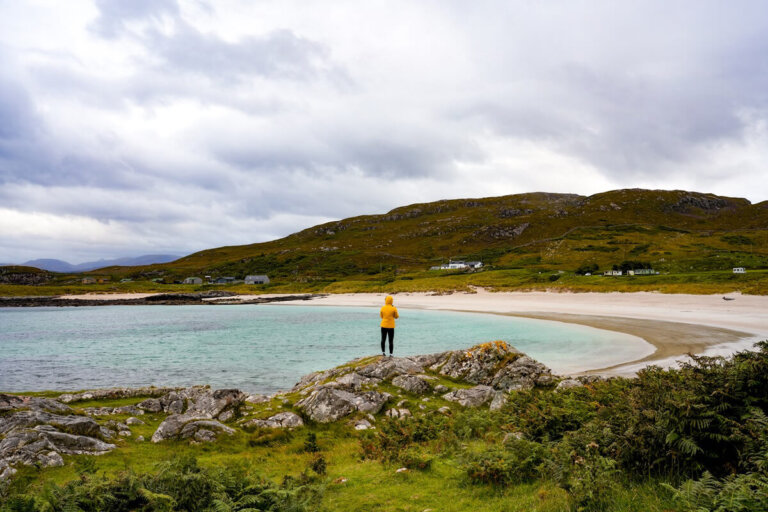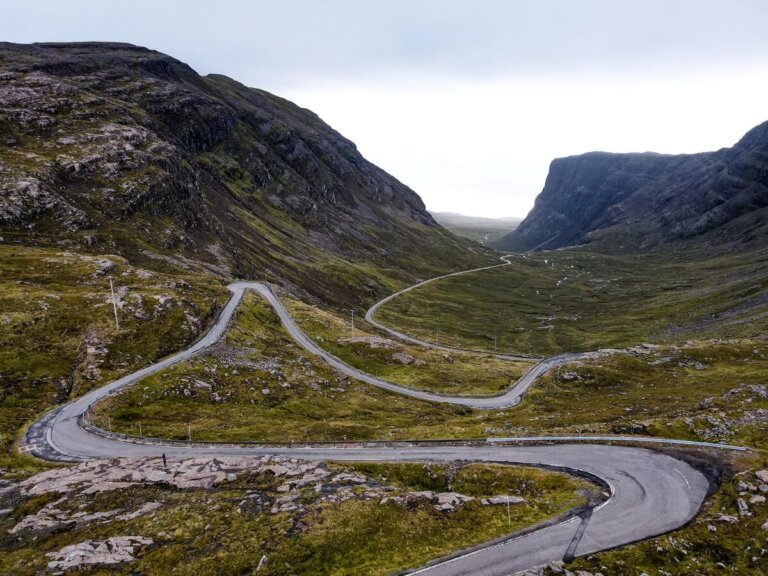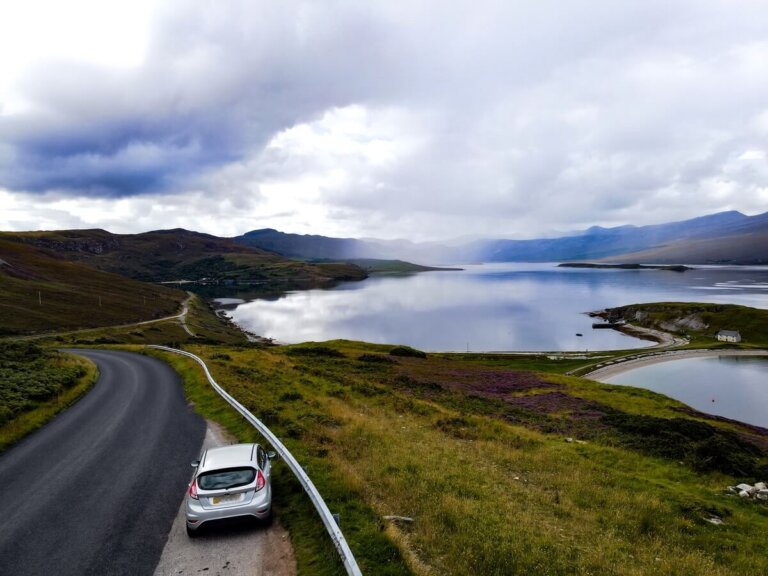Man-Made Landmarks to Visit Along the NC500 in Scotland
If you’re currently planning out your North Coast 500 (NC500) itinerary, and are wondering what there is to see and do, then you’re in the right place. In this guide we’ll provide you with a list of our favourite man-made landmarks along the NC500 in Scotland.
These include castles, ruins, lighthouses, road sections, towns and other places created by humans.
Of course there’s way more to see and do along the NC500, so at the end of this guide we’ve also added links to additional resources that will help you to plan what is possibly the best road trip in the United Kingdom.
Disclosure: This post may contain affiliate links, which means we may receive a small commission if you click a link and purchase something. Clicking these links won’t cost you anything, but it will help us to keep this site up and running! Learn more about our affiliate policy.
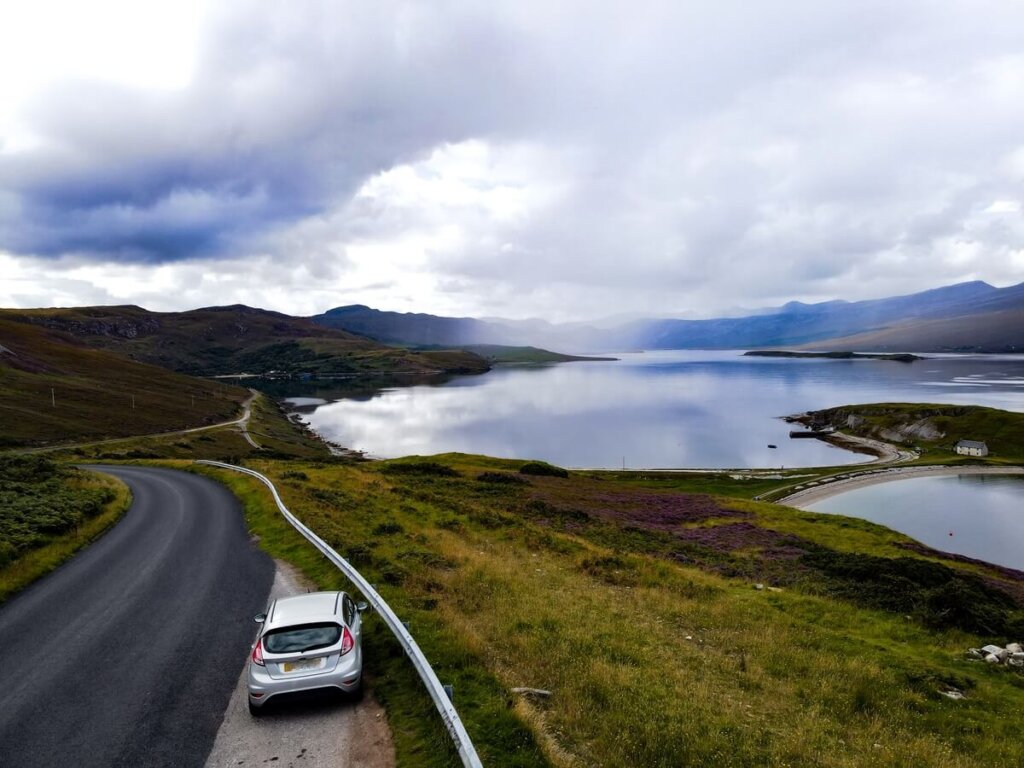
What is the North Coast 500, aka the NC500?
The NC500 is a 516-mile-long route around Scotland’s northernmost region. Although the road connecting the towns and cities along this route isn’t new, the official NC500 was only launched in 2014. Since then it has increased in popularity, so much so that locals have very mixed feelings about the number of tourists driving this route, especially during the summer.
The route passes through six regions of the Scottish Highlands: Inverness-shire, Wester Ross, Easter Ross, Sutherland, Caithness, and the Black Isle.
The scenic NC500 starts and finishes in Inverness, the capital of the Scottish Highlands. From Inverness you can either drive north-east first towards Wick and John o’ Groats or, alternatively, you can also drive west towards Shieldaig and then north towards Ullapool.
A minimum of 5 days is required to drive the NC500. However, we think that you should plan for at least 7 days to have a more enjoyable experience.
You can complete the NC500 in all types of vehicles including your average car, electric car, sports car, vintage car, campervan, motorbike, or even on a bicycle.
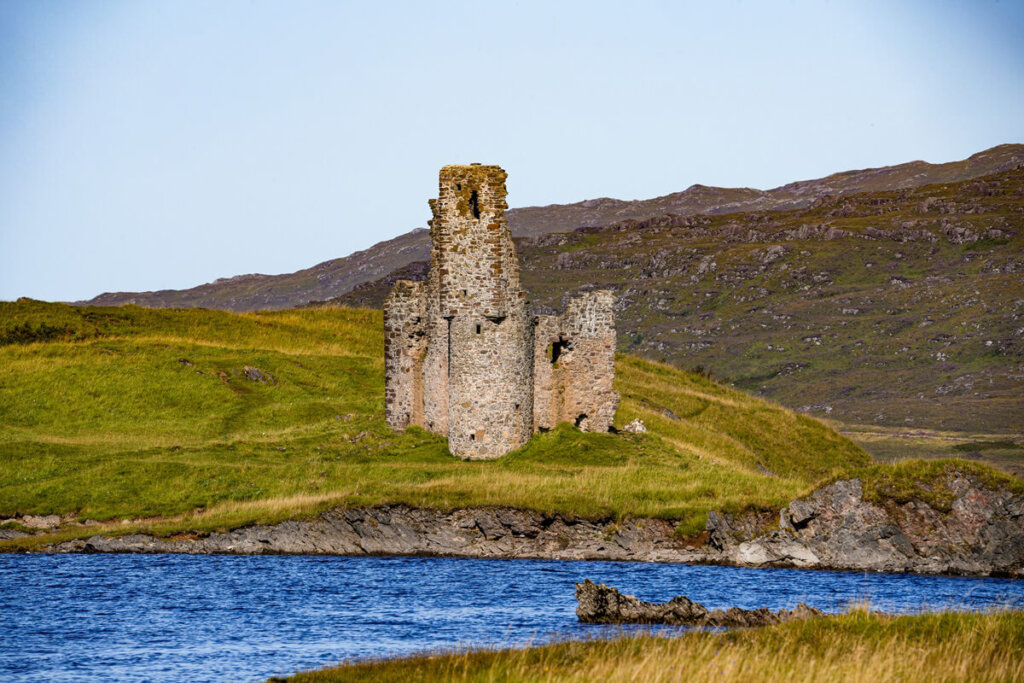
Man-Made Landmarks to Visit Along the NC500 in Scotland
Below you’ll find some of our favourite man-made landmarks and attractions that we managed to visit during our drive along the North Coast 500. Of course, there are way more than we can cover on this list, and we probably would’ve stopped at a few more if we had had more time, but we think this is a great place to start your planning process.
We’ve divided the landmarks into smaller categories such as castles and ruins, lighthouses, road sections, and other landmarks.
Beautiful Castles and Ruins to Visit along the NC500 in Scotland
Ardvreck Castle Ruins
The first ruin we visited along the NC500 was Ardvreck Castle. This old ruin is located in a scenic location, on a promontory on Loch Assynt. It was built in the 15th century by the MacLeods of Assynt. The castle made it into the history books when the Marquess of Montrose sought refuge there after losing the Battle of Carbisdale. He was later betrayed and executed. In 1672, the MacKenzies attacked and captured Ardvreck Castle.
Directions and Parking. The castle ruins are located along the A837 adjacent to Lock Assynt. Parking is available either at Ardvreck Castle Parking or Ardvreck Castle Viewpoint.
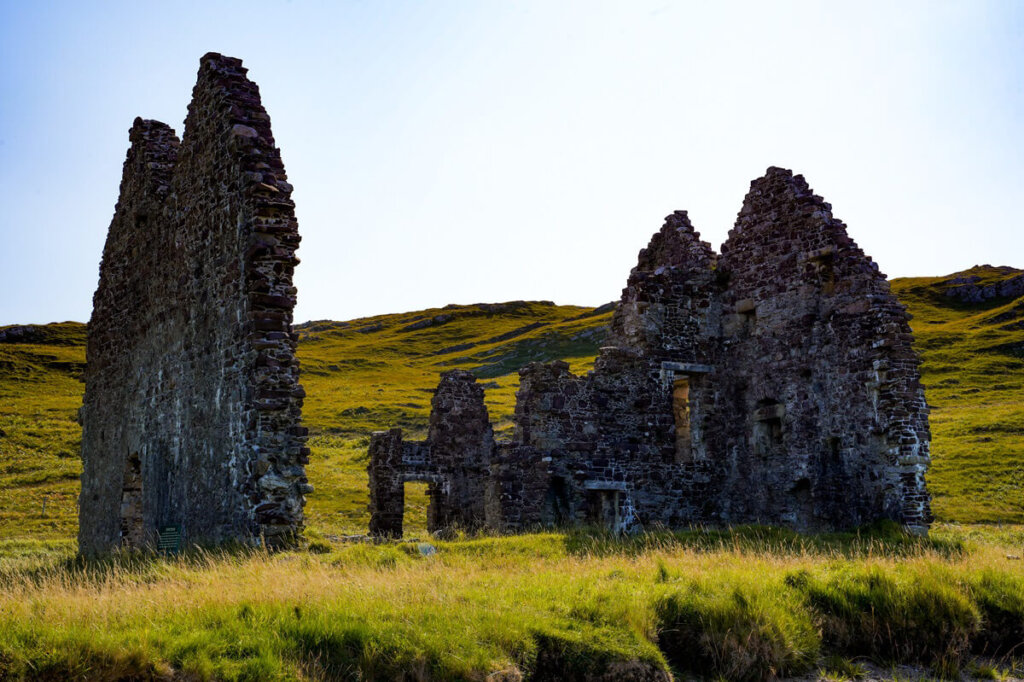
Calda House
Right next to Ardvreck Castle Ruins is Calda House. The ruin you see today was built by the MacKenzies about a decade after they took Ardvreck Castle. Apparently, the castle was destroyed by lightening, so they built this manor house instead. However, about another decade later, this house also burned down and has remained in ruins ever since.
Directions and Parking. The ruin is located along the A837 adjacent to Lock Assynt. Parking is available either at Ardvreck Castle Parking or Ardvreck Castle Viewpoint.
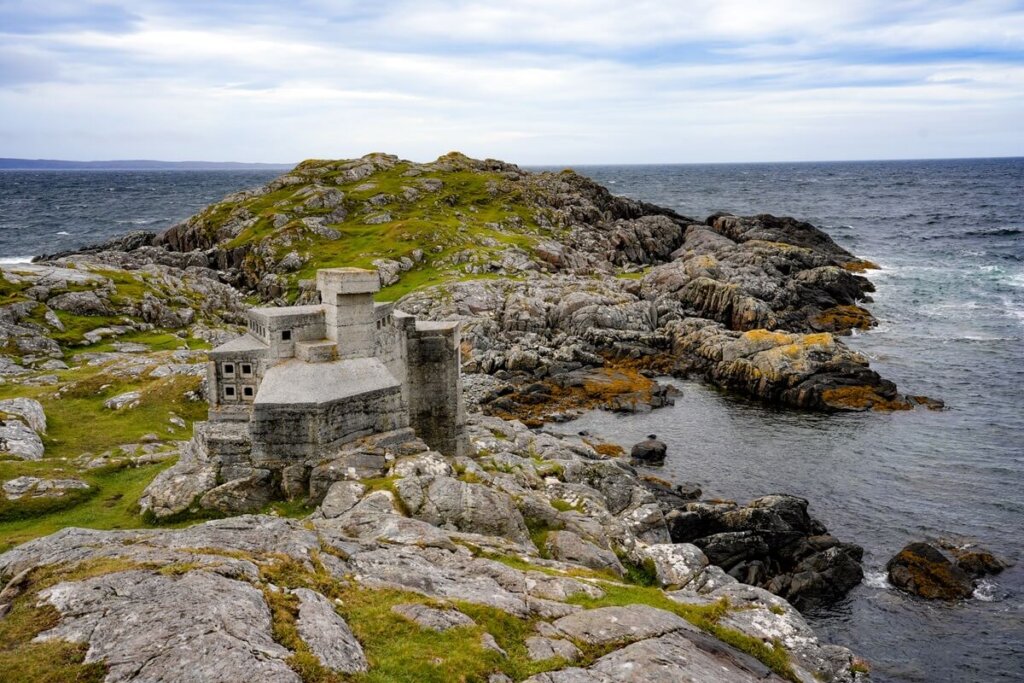
Hermit’s Castle
Another cool landmark along the NC500 is the Hermit’s Castle. It’s located on An Farad Bheag headland next to Achmelvich Beach. The beach itself is stunning and was one of our favourite beaches to visit. You can take a short walk from there to the castle.
Although this structure is called a ‘castle’, don’t expect to see a huge ruin when you reach it. In fact, the Hermit’s Castle is considered the smallest castle in Europe. The landmark was built in the 1950’s by David Scott, although we still don’t really know why he built it. Regardless, this tiny castle is located in a scenic location that is itself worth a visit.
Directions and parking. Turn left off the B869 towards the village of Achmelvich. You can park at Achmelvich Beach Car Park.
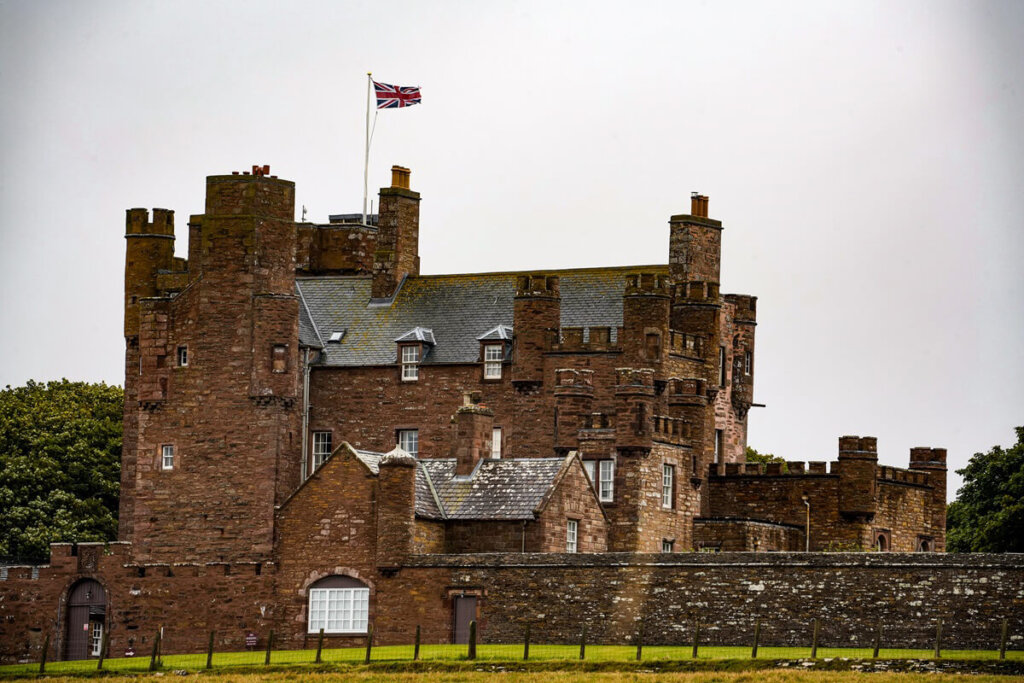
The Castle & Gardens of Mey
This castle along the NC500 was built by the 4th Earl of Caithness, for his son William Sinclair. It’s located about 8 miles to the north east of Castletown and 6 miles west of John O’ Groats, just off the A836. The castle’s name was changed to Barrogill Castle and it underwent some alterations in the 17th and 18th centuries. Apparently, MacLeod of Assynt, who betrayed the Marquis of Montrose, was imprisoned in this castle.
In 1952 it was sold to Her Majesty Queen Elizabeth the Queen Mother, who restored it.
Parking. There’s parking available on site. For further information about opening times and entry fees, visit their website.
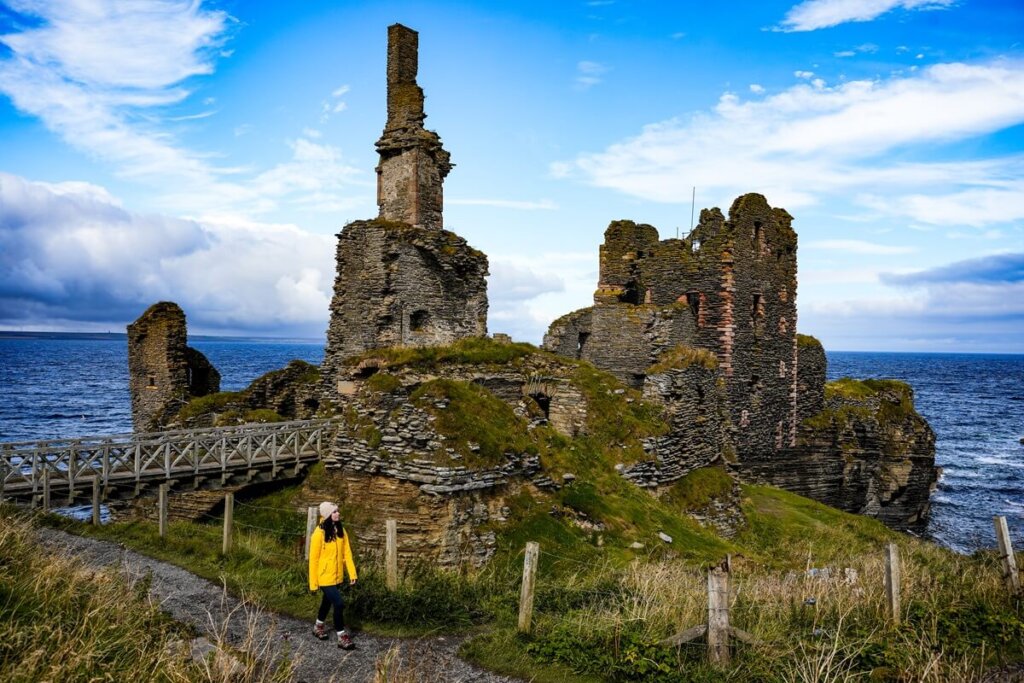
Castle Sinclair Girnigoe Ruins
Another magnificent castle ruin we visited on our NC500 itinerary was Castle Sinclair Girnigoe. The ruin is perched on a rocky promontory to the north of Wick, in Sinclair’s Bay at Noss Head.
The site is comprised of two castle ruins: the 15th-century Castle Girnigoe; and the early 17th-century Castle Sinclair. You can walk around the ruins and the immediate area, which has some seriously impressive sea stacks. We initially stopped here to see the castle ruins and didn’t expect to find such unique formations along the coast as well. This made our visit even more memorable.
Directions and Parking. From Wick, follow the Broadhaven Road to Staxigoe then the small roads towards Noss Head. Parking is available at Noss Head Car Park.



Dunrobin Castle & Gardens
Possibly the most beautiful castle to visit along the NC500 is Dunrobin Castle. It is one of the largest castles in the Northern Highlands. Dunrobin Castle has been the family seat of the Earls and Dukes of Sutherland since the 13th century, which makes it one of the oldest continuously inhabited castles in Britain. We were able to tour around the rooms of this fairytale looking castle, as well as walk around its formal gardens. We also loved the daily birds of prey flying demonstrations, which are included in your admission fee.
Directions and Parking. The castle is located about a mile north-east of Golspie, just off the A9. Parking is available on site. For further information about opening times and entry fees, visit their website.
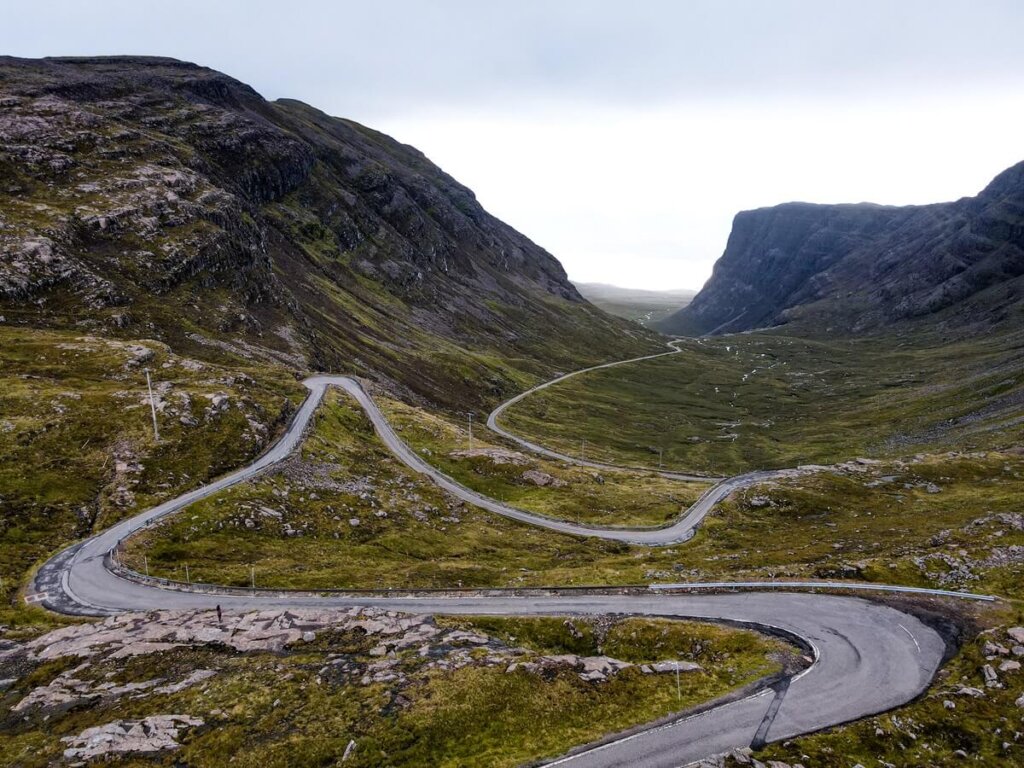
Cool Road Sections Along the NC500
Driving along the NC500 can be just as enjoyable as stopping at its various attractions. The western part of the loop is particularly beautiful and there are a few cool road sections that we’d like to highlight below.
Bealach na Bà Pass
One of the most iconic road sections along the NC500 is Bealach na Bà Pass. Translating to ‘Pass of the Cattle’, this winding single-track mountain road is located on the Applecross Peninsula. It rises from sea level to over 2,000 ft, with an average gradient of 7%, which makes it one of the steepest climbs in the UK.
The pass also has some tight hairpin bends that reminded us of the Sa Calobra road in Mallorca. Make sure to drive with extra care here, especially in bad weather conditions.
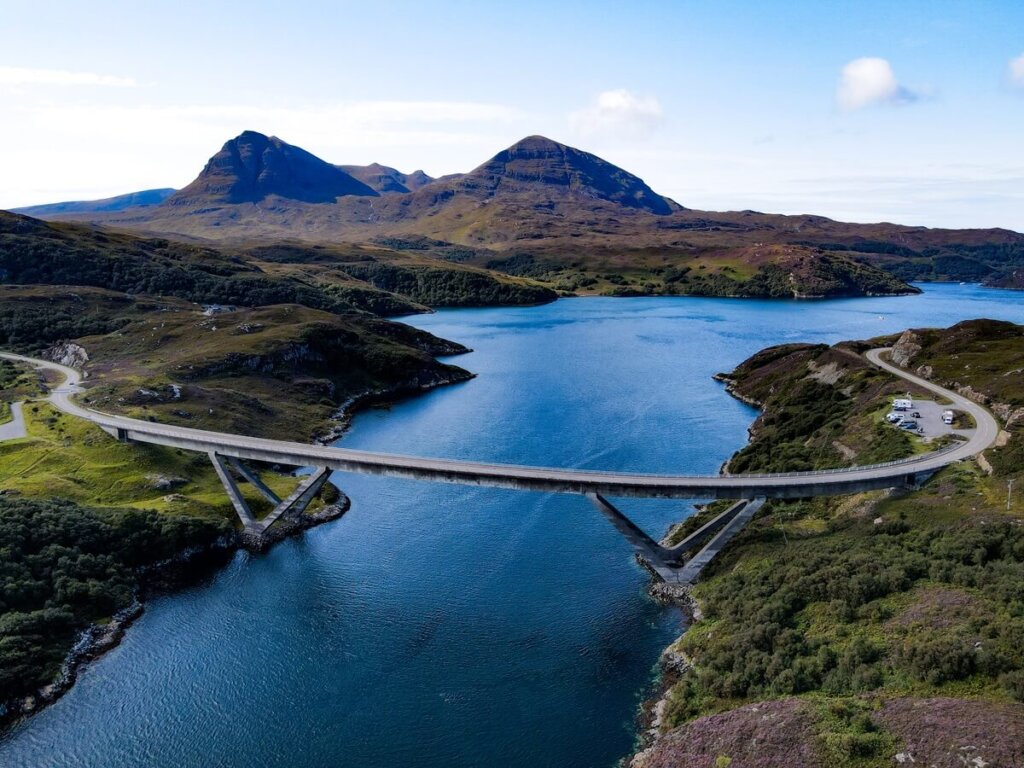
Kylesku Bridge
Another one of our favourite road sections to drive through was Kylesku Bridge. This impressive curved bridge is located just below Kylestrome and crosses Loch a’ Chàirn Bhàin. Construction of the bridge started in 1982 and it was opened to traffic in 1984, replacing the old Kylesku Ferry which previously linked Kylestrome to Kylesku.
Today, there are two car parks at either end of the bridge. From these vantage points we got an amazing overview of the bridge and the surrounding area. It’s definitely worth a quick stop!
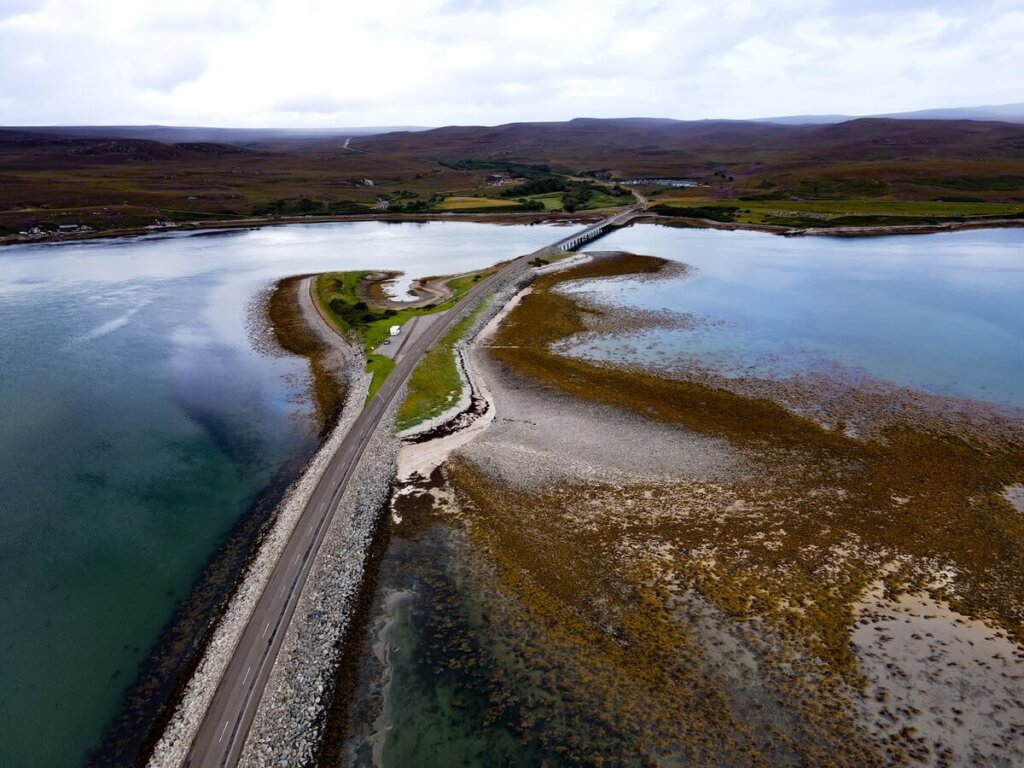
Kyle of Tongue Bridge and Causeway
The Kyle of Tongue Bridge and Causeway crosses the Kyle of Tongue sea loch along the NC500. It was built by Sir Alexander Gibb & Partners in 1971 to allow the A838 across the loch. Prior to the bridge and causeway people had to use a ferry to cross, or the narrow road that runs around the sea loch.
Crossing this section of the NC500 was another one of our favourite driving moments. There’s even a small car park halfway along the bridge where you can get out and enjoy beautiful views of the surrounding area.
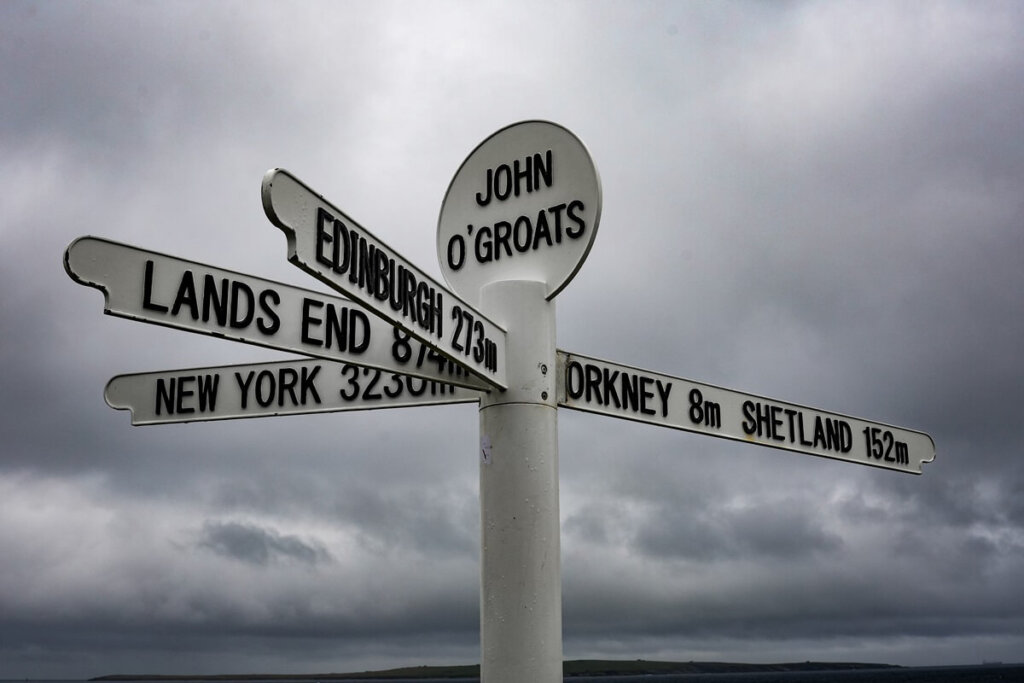
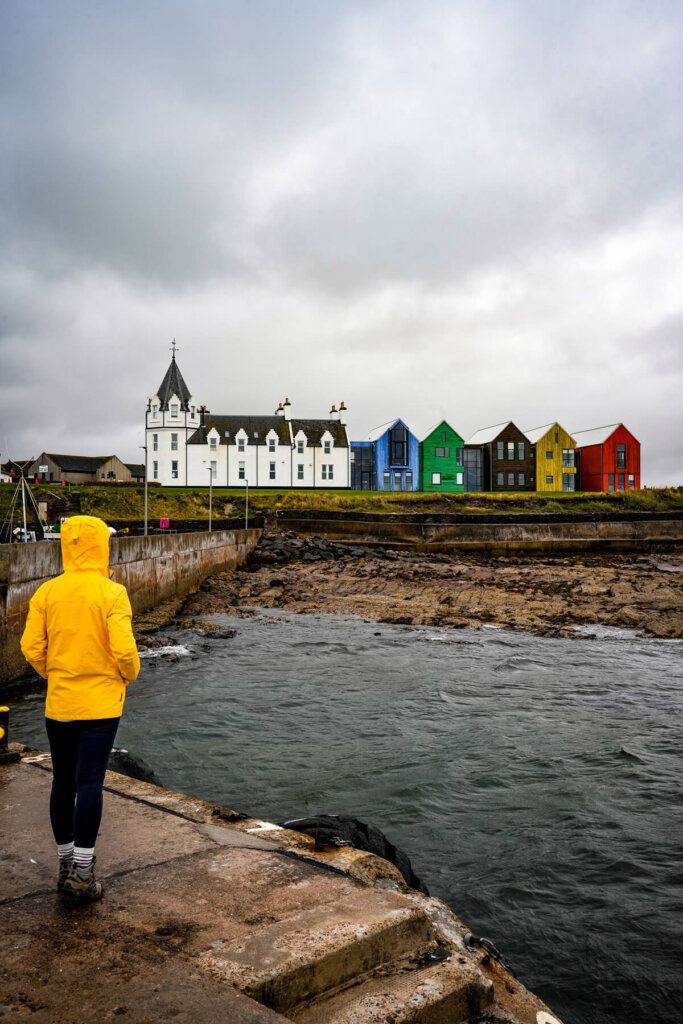

John O’ Groats Signpost (Where the Road Ends)
A landmark everyone stops at when driving the NC500 is the John O’ Groats signpost. It’s located in the tiny village of John O’ Groats which only consists of a handful of buildings, a visitor centre and the colourful bay. You might think that this signpost marks the most northerly point on mainland Britain, but that’s not correct. The northernmost point of mainland Britain is at Dunnet Head, a few miles west of John O’ Groats. In addition, Duncansby Head is the most northeasterly point in mainland Britain.
John O’ Groats is the finishing (or starting) point of the ‘End to End’ journey to/ from Land’s End in England, located 876 miles away.
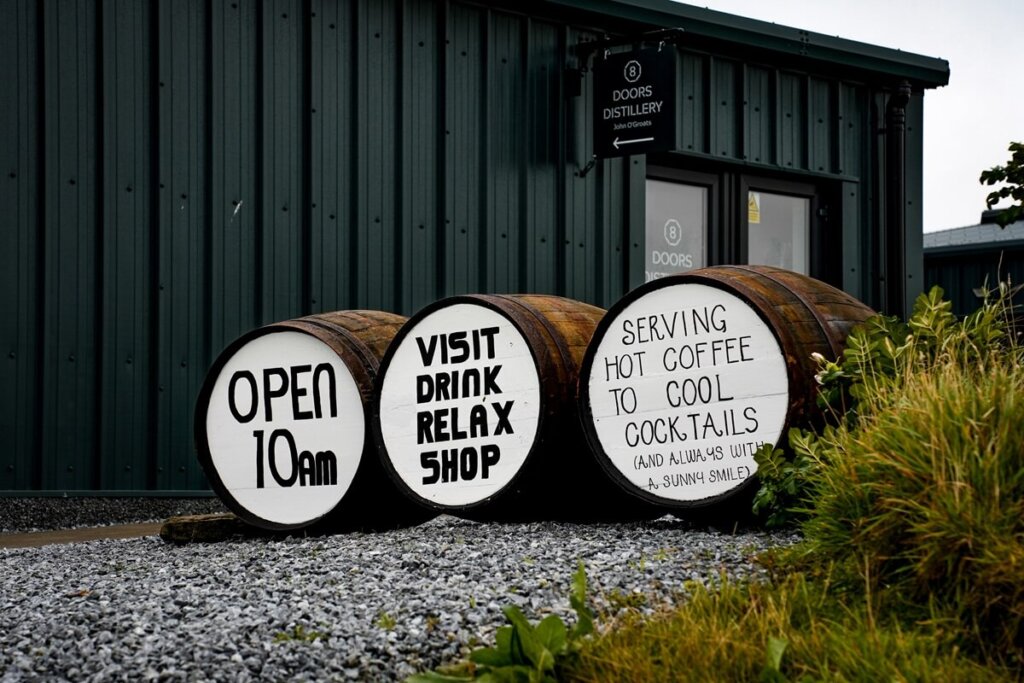
Distilleries and Breweries to Visit Along the NC500
There are around 150 Whisky distilleries across Scotland, which means there’s no shortage of ones to consider adding to your NC500 itinerary. Below we’ve listed a few of the more popular places:
- The Singleton of Glen Ord Distillery, in Muir of Ord (Whisky)
- Pulteney Distillery, in Wick (Whisky)
- Glenmorangie Distillery, near Tain (Whisky)
- Clynelish Distillery, near Brora (Whisky)
- Dunnet Bay Distillery, near Thurso (Rock Rose Gin and Holy Grass Vodka)
Important to Note. With plenty of distilleries to visit along the route, it’s worth highlighting that Scotland has a zero tolerance policy when it comes to drinking and driving. You can read more about this on the official website.
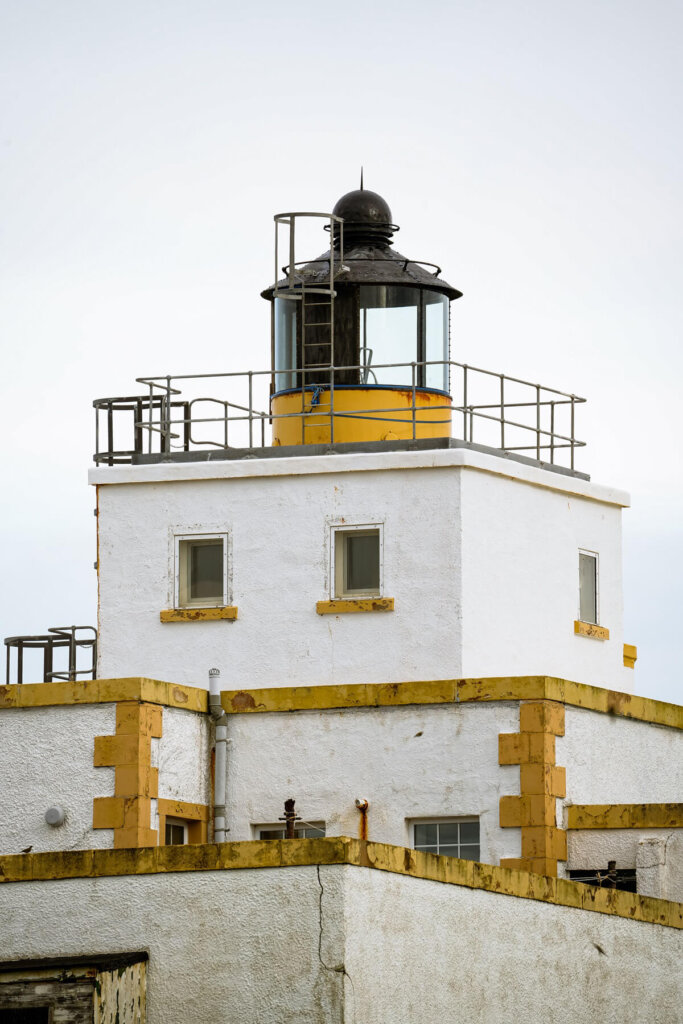
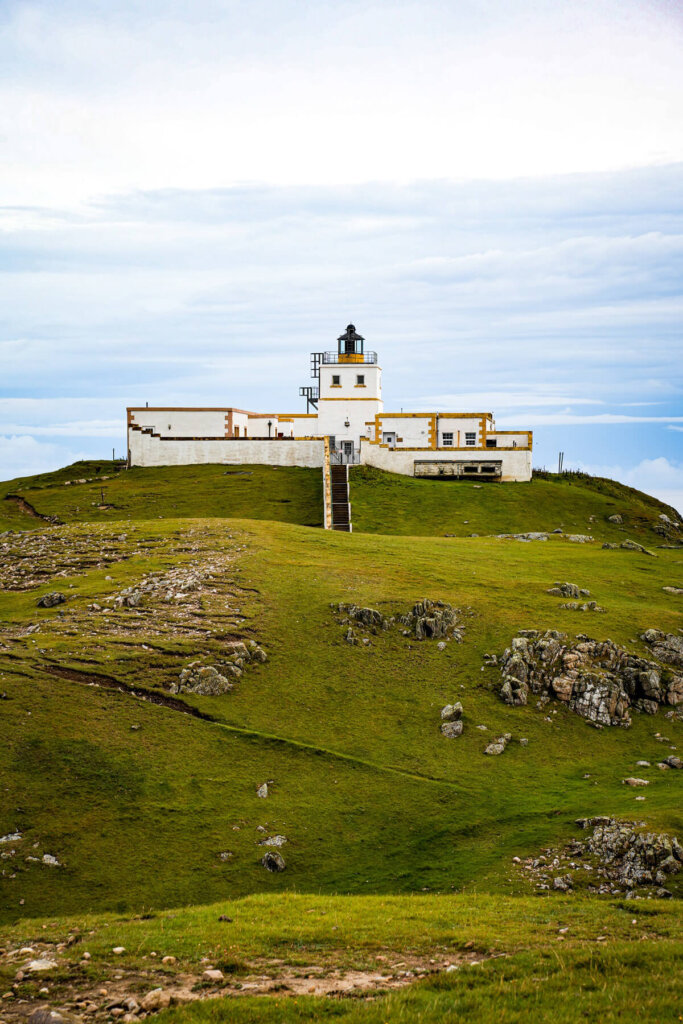
Lighthouses to Visit Along the NC500
Lighthouses were another of our favourite man-made landmarks to visit on our NC500 trip. We’ve listed a few below that are definitely worth stopping at.
Strathy Point Lighthouse
The first lighthouse we visited along the NC500 was Strathy Point Lighthouse. It’s located in a picturesque spot at the tip of a peninsula, surrounded by rugged coastline.
This lighthouse was the Northern Lighthouse Board’s first all-electric station. It began operating in 1958 and was automated in 1997. In 2012 the lighthouse was permanently discontinued and was sold a year later.
Today, you can take a 15-20 minute walk out to the lighthouse from the car park and admire the surrounding area. We spotted a few seals in the water, so make sure to be on the lookout for some wildlife.
Directions and Parking. Turn left at the sign pointing to Strathy Point along the A836, just before you reach Strathy. Follow this road until you reach a tiny car park here. You’ll need to walk out to the lighthouse from there. Note that the walk is through private land, so make sure to be respectful when visiting.
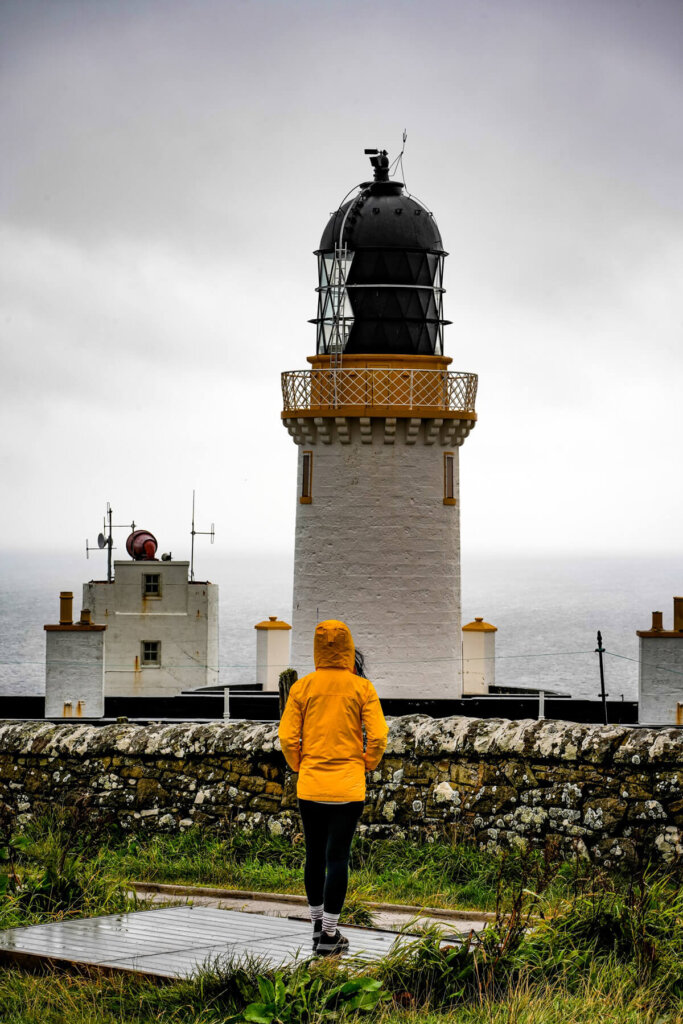
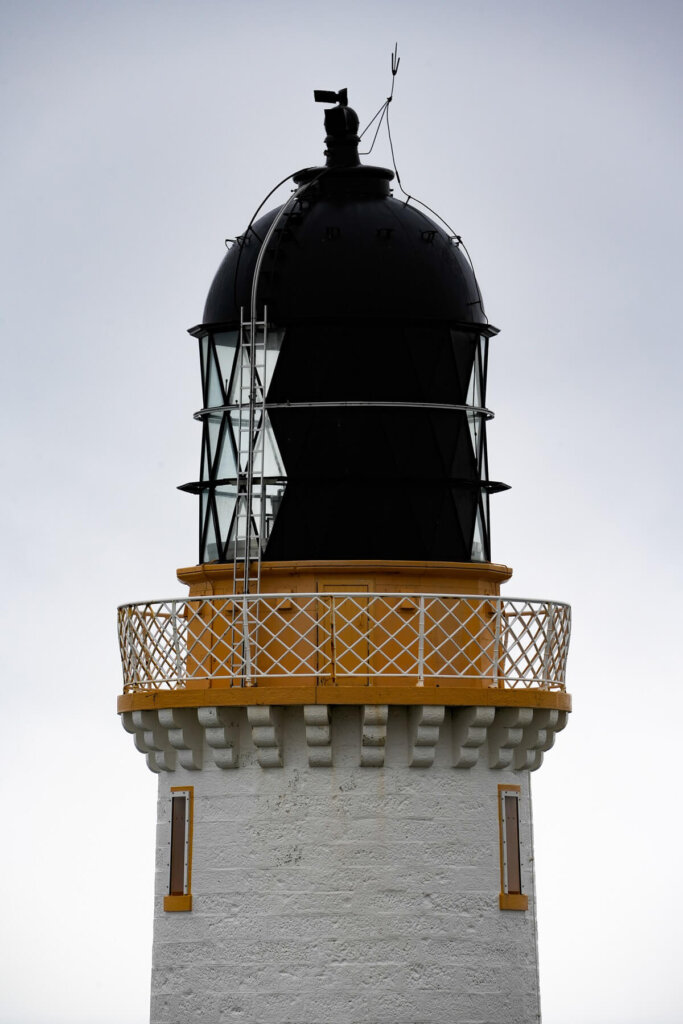
Dunnet Head Lighthouse
If you’d like to visit the northernmost point on mainland Britain, then you need to add a stop at Dunnet Head Lighthouse, located at the tip of the Dunnet Head peninsula. The lighthouse was built in 1831 by Robert Stevenson. The keepers lived in the adjacent cottages with their families until 1989. Since then it’s been automated and is remotely controlled by the Northern Lighthouse Board.
At the time of our visit it was absolutely chucking it down with rain, so we didn’t stay for too long. However, if you have some time and are there in the right season, you could potentially see some Puffins, Razorbills and Guillemots at Dunnet Head.
Directions and Parking. At Dunnet, turn onto the B855 and follow that all the way to Dunnet Head Car Park.
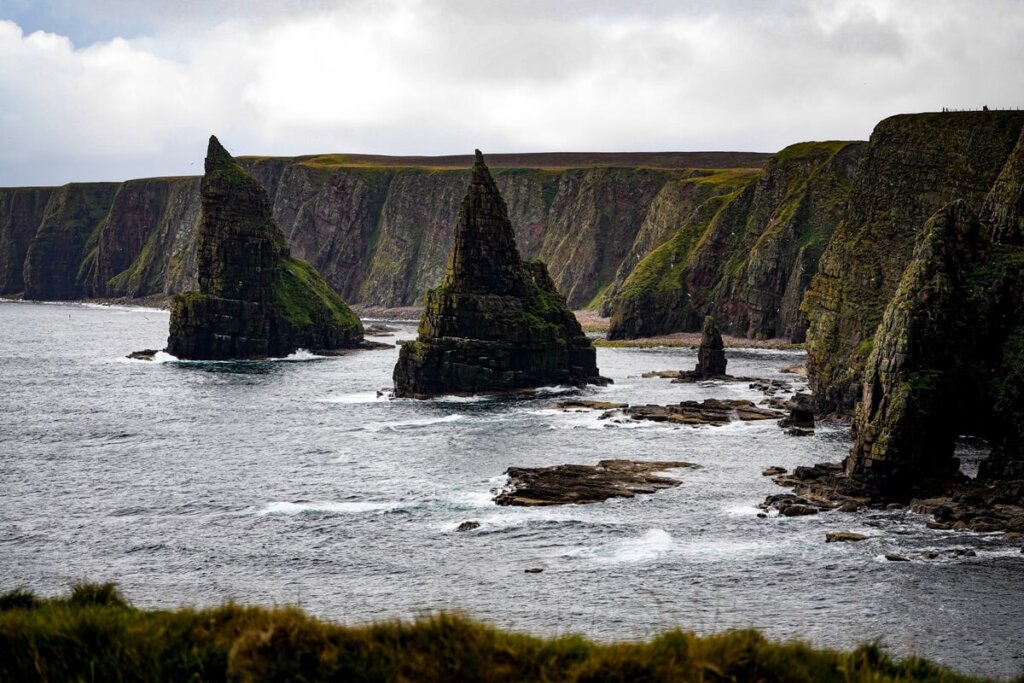
Duncansby Head Lighthouse
If you’ve stopped at the northernmost lighthouse, then make sure to also stop by the most northeasterly lighthouse in mainland Britain. It was built in 1924 and was automated in 1997.
The best part of visiting this lighthouse is that it’s only a short walk from the impressive Duncansby Stacks. These huge sea stacks were formed by tidal erosion over time and offered us some incredible coastal views. Plus, you can also do some wildlife spotting here too.
Directions and Parking. If you want to spend longer out and about then we suggest parking at John o’ Groats Car and Coach Park. From here, you can go on a hike along Duncansby Head, stop by the Duncansby Head Lighthouse and then carry on down to the Stacks. In case you’re short on time, or don’t want to walk that much, then drive to Duncansby Head Lighthouse Car Park and start your walk from there.
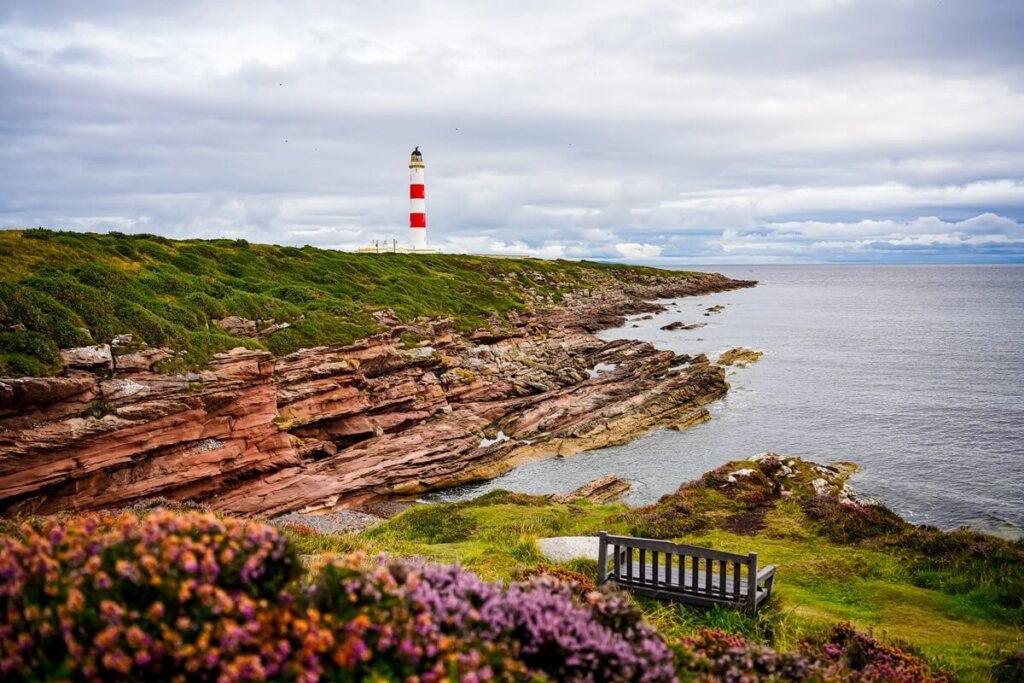
Tarbat Ness Lighthouse
This beautiful red and white lighthouse is located at the north-west end of the Tarbat Ness peninsula to the north of Portmahomack. It was designed by Robert Stevenson in 1830 and it was automated in 1985. Apparently, it is the third tallest in Scotland.
For the most scenic view, we recommend walking out to the point that’s marked on Google Maps as ‘Scenic viewpoint’.
Directions and parking. From Portmahomack, follow Golf Course Road all the way to Tarbat Car Park.
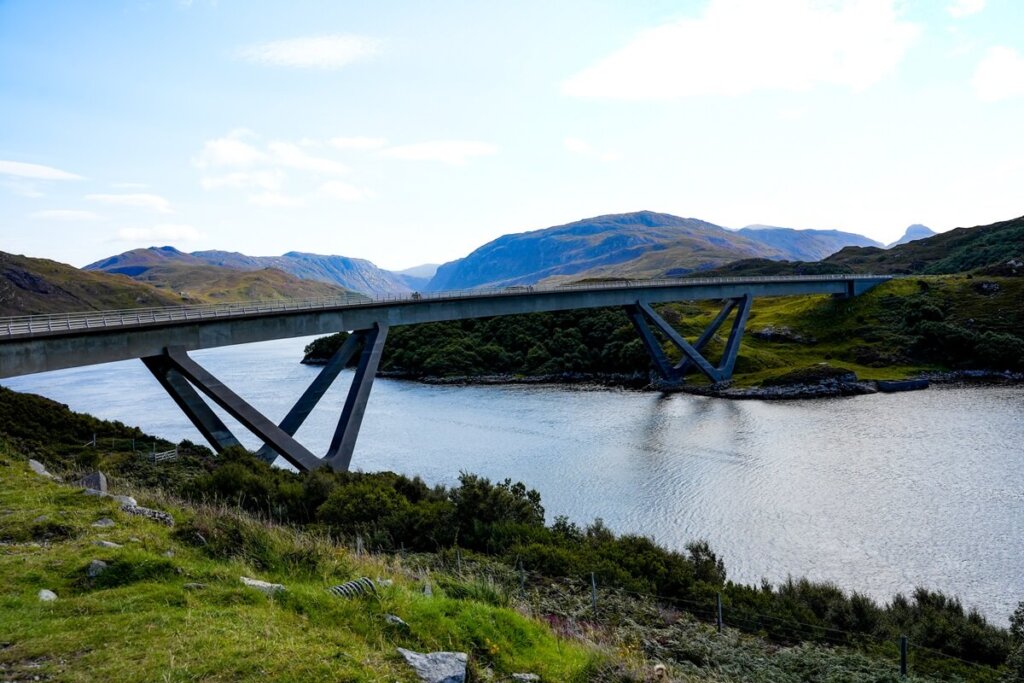
Additional NC500 Resources
The NC500 isn’t just about seeing man-made attractions though. Below we’ve linked some of our other useful guides, from the best beaches to must see natural attractions, and a beginner’s guide to our top driving tips, as well as some official websites you should use when planning your own NC500 route.
Final Thoughts on Man-Made Landmarks to Visit Along the NC500 in Scotland
Old ruins, fairytale castles, distilleries, picturesque lighthouses, and scenic road sections. We loved that the NC500 was filled with as many incredible man-made landmarks as natural ones. It’s easy to see why driving the North Coast 500 has become so popular over the years. If we had to pick a favourite landmark then it would probably be Castle Sinclair Girnigoe Ruins because of the incredible rock formations we didn’t expect to find right next to it.
Have you ever driven the NC500 before? If so, which landmarks did you stop at and what was your favourite? If not, which ones from our list would you add to your itinerary? Let us know in the comments below.

